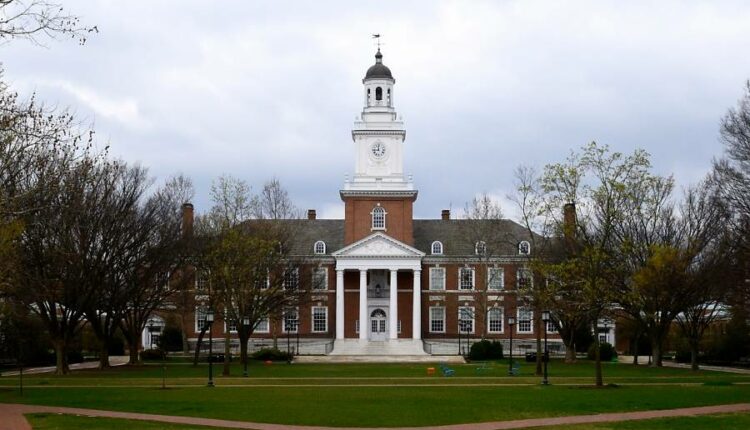Johns Hopkins University: Metabolism of COVID-19 Antibodies from Convalescent Plasma Suggests Possible Safe Treatment for High Risk Children
Johns Hopkins Medicine researchers report that a prospective study of 14 infants and children demonstrated that convalescent plasma — a blood product collected from patients recovered from infections with the coronavirus (SARS-CoV-2) that causes COVID-19— was safe in high risk children infected with or exposed to the virus. The study, published Jan. 25 in the journal JCI Insight, showed that SARS-CoV-2 antibodies were metabolized similarly in children of all ages and weights.
“Even once a SARS-CoV-2 vaccine is available for all ages, there are going to be some immunocompromised children who won’t be able to mount a robust enough immune response from the vaccine, so it’s incredibly important that we study all possible therapies to treat them,” says Oren Gordon, M.D., Ph.D., M.Sc., a pediatric infectious disease fellow at Johns Hopkins Medicine and lead author of the paper.
“We knew that our population would be too small to analyze the effectiveness of convalescent plasma, so we set out to study whether the metabolism of the antibodies delivered with this therapy are the same in adults and kids,” says Sanjay Jain, M.D., M.B.B.S., professor of pediatrics, radiology and radiological science at the Johns Hopkins University School of Medicine and senior author of the paper. “As is often said, kids are not just small adults. Their metabolism is often different, and we didn’t know whether that was true of metabolizing these antibodies.”
Convalescent plasma has been used throughout the COVID-19 pandemic to provide naturally generated antibodies against the virus for high risk people. A recent Johns Hopkins Medicine clinical trial of more than 1,000 high risk adults, for example, found that the use of plasma early in the course of infection can decrease the risk of hospitalization for adults by 54%. However, data on children has been harder to come by, the researchers noted.
In the new study, designed to fill the information gap and carried out between May 2020 and April 2021, 14 children age 3 months to 17 years were given convalescent plasma within four days of exposure to the coronavirus, or within five days of the onset of COVID-19 symptoms. Six of the children were hospitalized, and the other eight remained outpatients. The children — treated at Johns Hopkins Children’s Center — were all considered high risk, with factors including chronic lung disease, cerebral palsy, liver failure and cancer, making them more likely to develop severe COVID-19 symptoms. The researchers collected blood samples from the children over the two months following their transfusions to study how their bodies metabolized the plasma.
Three study participants developed a temporary rash and no further complications. No other side effects of the treatment were reported. On average, 30 minutes after administration of plasma, the levels of antibodies in the blood of recipients were 6.2% of the antibody concentration seen in donors. This antibody level was expected due to dilution of the donor plasma by the recipients’ blood during transfusion. Studies of adults have suggested that amount of antibody — while much lower than in the plasma donors — is enough to protect recipients from severe COVID-19.
The researchers also saw antibody levels steadily decline over 14 to 21 days following plasma transfusion. This, while also expected, they say, means the children treated with convalescent plasma did not receive lasting protection from the treatment. The quick decline also means that selecting donor plasma with the highest possible antibody levels is critical to ensuring that levels in recipient children start off at a high enough level.
“It makes more sense to give antibody-based treatment early in the course of a viral infection when the number of virus particles in the body is still low.” says Howard Lederman, M.D., Ph.D., professor and director of the immunodeficiency clinic at Johns Hopkins, and co-author of the paper. “By about a week after you get the convalescent plasma, the level in the blood is only half of the level right after the infusion. This time course means convalescent plasma isn’t particularly good as a prophylactic against COVID-19, since it doesn’t stick around.”
Because the results suggest that the plasma is metabolized in children much the way it has been reported to metabolize in adults, Gordon, Jain, Lederman and their colleagues believe convalescent plasma’s effectiveness in children is likely similar as well.
The researchers have now teamed up with a network of children’s hospitals across the country to continue studying the use of convalescent plasma for high risk children. They hope to gather more safety data and collect information on how centers are choosing which children should be offered the plasma.
As more and younger children are vaccinated against COVID-19, Jain says, fewer will be at high risk of developing severe SARS-CoV-2 infections. However, immunocompromised children could still benefit from convalescent plasma. Also, as new variants of SARS-CoV-2 likely arise, convalescent plasma will probably be available for patients sooner than new vaccines, boosters or monoclonal antibodies — all of which must be designed and generated in a laboratory.
The U.S. Food and Drug Administration says the decision to treat a patient younger than age 18 with COVID-19 convalescent plasma should be based on an individualized assessment of risk and benefit. Larger studies are needed for more data on effectiveness and safety.

